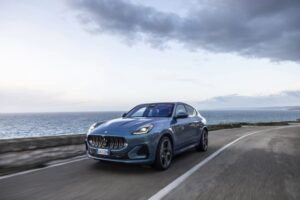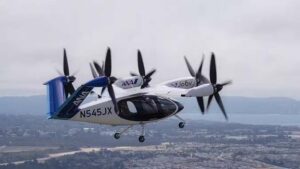Ford has announced it’s dropping the 2.0-liter diesel engine from its Ranger pickup and replacing it with a plug-in petrol hybrid system. The move marks a shift for Britain’s most popular pickup truck, which regularly claims over 50% of the market share.
The Ranger faces strong competition from the Toyota Hilux and Volkswagen Amarok. But even the Amarok isn’t really a threat – it’s built on the Ranger platform at Ford’s South African factory, so Ford still profits from every sale.
The electric pickup market remains limited. The Maxus T90 EV barely functions as a working vehicle. KGM’s upcoming Musso EV targets the compact pickup segment with reduced payload capacity.
Ford isn’t ready to go fully electric with the Ranger, but the company’s making one significant change by ditching diesel for this petrol-electric hybrid.
Power and Performance
Diesel engines have dominated pickups for decades, making Ford’s switch to petrol-electric power controversial among traditional buyers. Forum discussions show mixed reactions to the concept.
The system combines a 2.3-liter petrol engine – previously used in the Focus ST and Mustang – with an electric motor powered by an 11.8kWh battery pack.
The setup delivers 277bhp and 514lb ft of torque. That’s second only to the sporty Ranger Raptor for power and more torque than any previous Ranger model.
In a truck weighing close to 2.5 tonnes, the battery provides 26 miles of pure electric range. Ford’s data suggests that covers daily needs for more than half of Ranger buyers.
Real-world testing showed around 15 miles from a 50% charge. The petrol engine can recharge the battery while driving, though this impacts fuel economy slightly. Overall economy averaged almost 50mpg – significantly better than previous Rangers.
Running on petrol alone drops economy below 30mpg.
The small battery charges fully in about four hours using a standard three-pin socket. There’s no rapid charging capability, but overnight charging or charging while parked on work sites is straightforward.
Off-road capability matches other Rangers. The electric motor provides near-silent operation through forests and mud until the engine kicks in during low-range driving. A locking rear differential handles trickier terrain.
Design and Interior
External changes are minimal beyond a second filler flap on the side. One flap accesses the 70-liter petrol tank, while the other – marked with a lightning symbol – houses the Type 2 charging plug.
The front maintains its blunt, upright design but appears less aggressive than most pickups. Wildtrak and Stormtrak versions feature LED C-clamp lights, while the XLT model uses traditional bulbs.
Interior modifications include a button controlling EV modes. Options let the system automatically decide when to use electric power, save battery for later use, charge the battery via the engine, or drive on electric power only.
The dashboard retains its large vertical infotainment screen, chunky steering wheel, phone storage, multiple cupholders, and physical climate controls.
Payload and Practicality
Ford claims no compromise in capability – the PHEV still carries one tonne, tows 3.5 tonnes, and maintains load box dimensions. However, some caveats exist.
The load box is 3cm shallower to accommodate the underlying battery pack. Depth remains around 47cm, unlikely to affect most users significantly.
Payload presents a bigger issue. While the truck carries one tonne – allowing business VAT claims – adding popular options like sports bars, side steps, and roof rails drops payload below the crucial 1,000kg threshold.
These items come as no-cost options on the Wildtrak but create a choice between style and function for business buyers.
Pricing and Specifications
The PHEV commands a £2,500 premium over diesel models. The Wildtrak costs £44,900 plus VAT and charges, while the XLT starts at £39,500 – nearly a bargain despite losing heated seats, leather steering wheel, and automatic climate control.
The PHEV-exclusive Stormtrak model includes extensive options but costs £49,800.
Company car tax benefits are substantial. Where a 40% taxpayer faces around £7,700 annually for a Wildtrak 2.0-liter diesel, the PHEV reduces that to £4,400 – a cut of more than 40%.
Ford continues producing the 3.0-liter V6 diesel for buyers who regularly tow heavy loads over long distances. But for most professional and private buyers, the PHEV offers significant benefits with minimal compromise.
Emissions targets and UK taxation changes forced Ford’s decision, but the result is a convincing proposition that transforms Britain’s leading pickup.
Ford Ranger Wildtrak PHEV Specifications:
- Price: £44,900 plus VAT and charges
- Powertrain: Petrol engine plug-in hybrid, all-wheel drive
- Battery: 11.8kWh
- Power: 277bhp
- Torque: 514lb ft
- 0-62mph: 9.2 seconds
- Electric range: 26 miles





